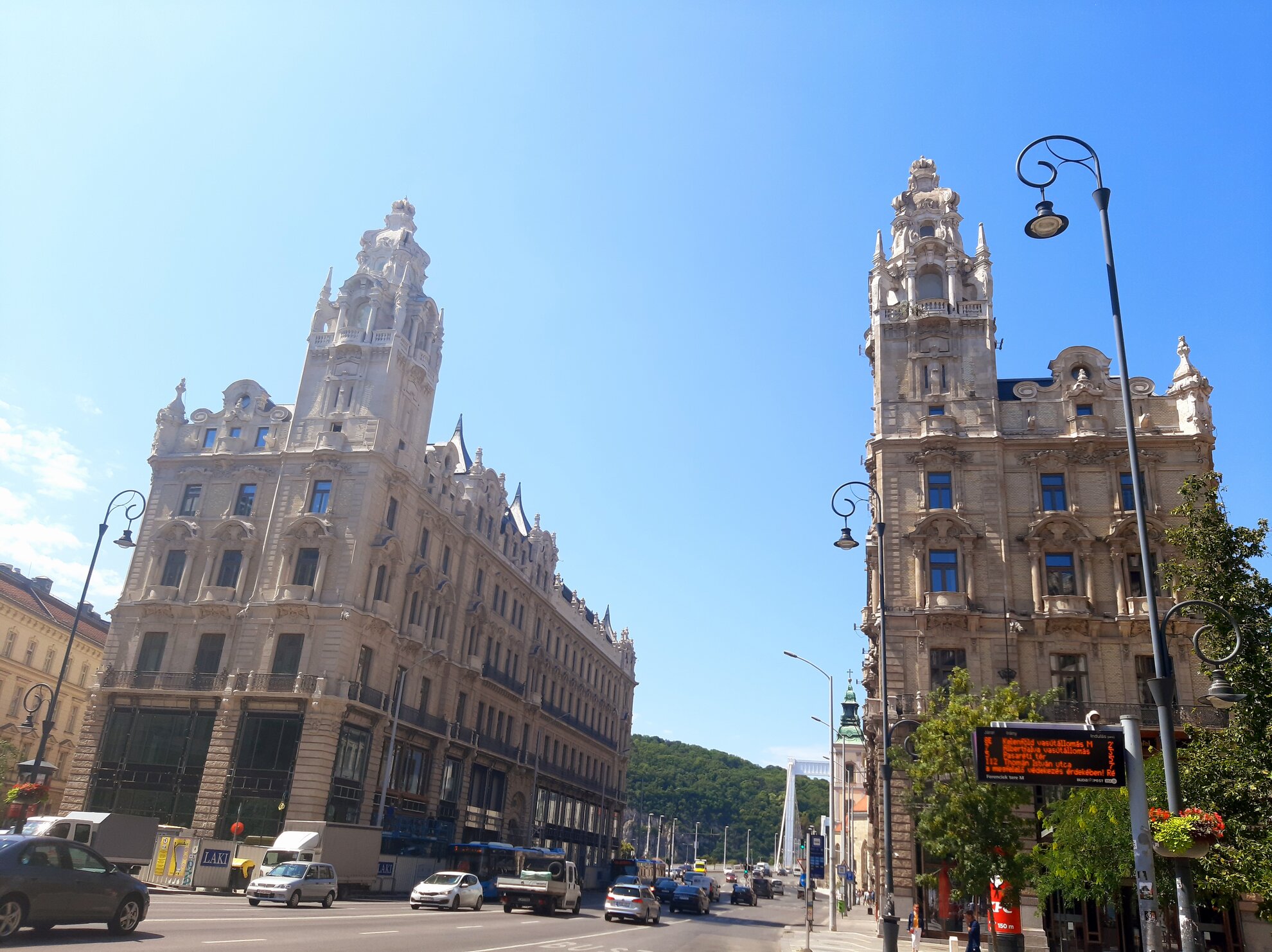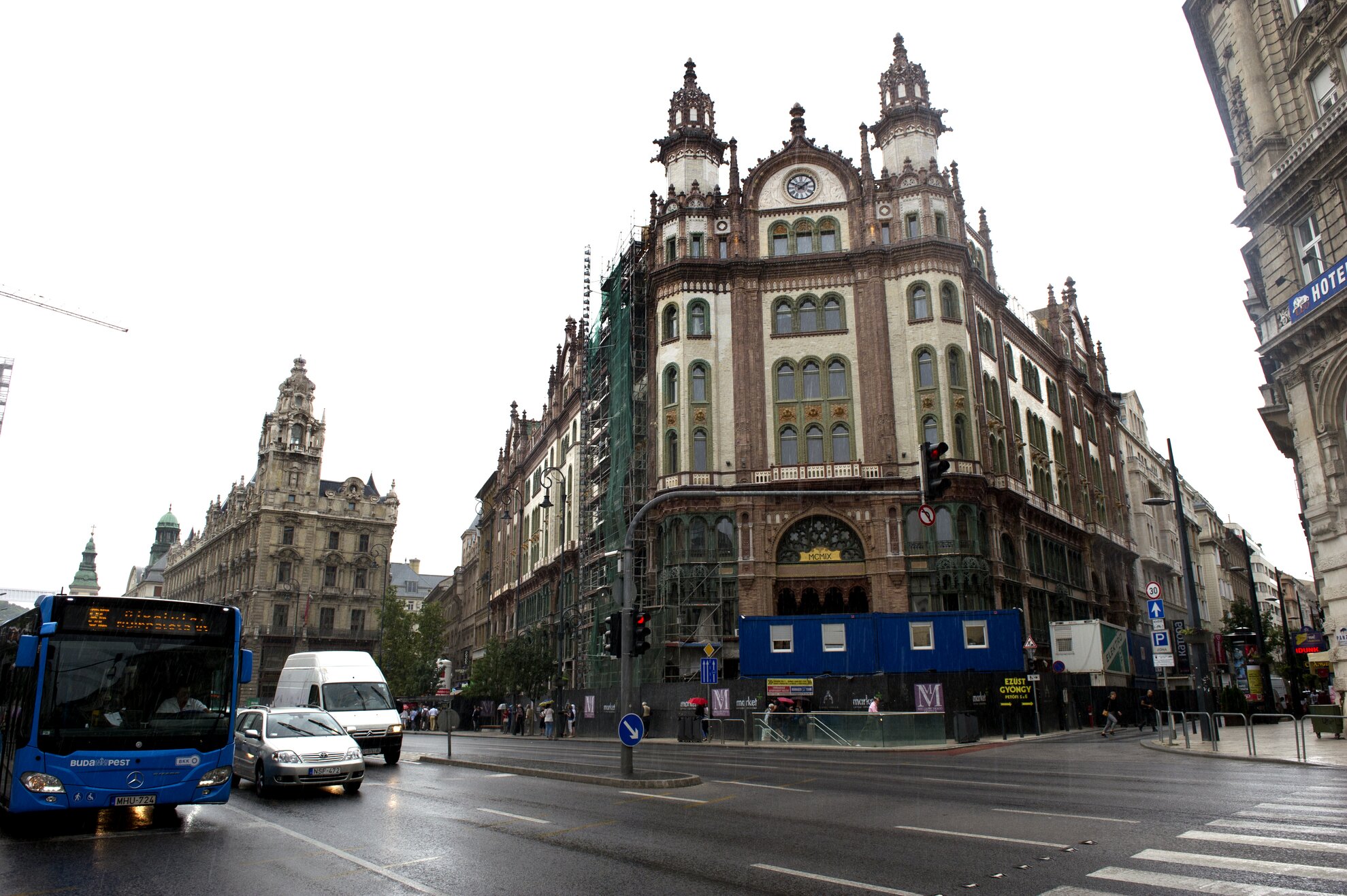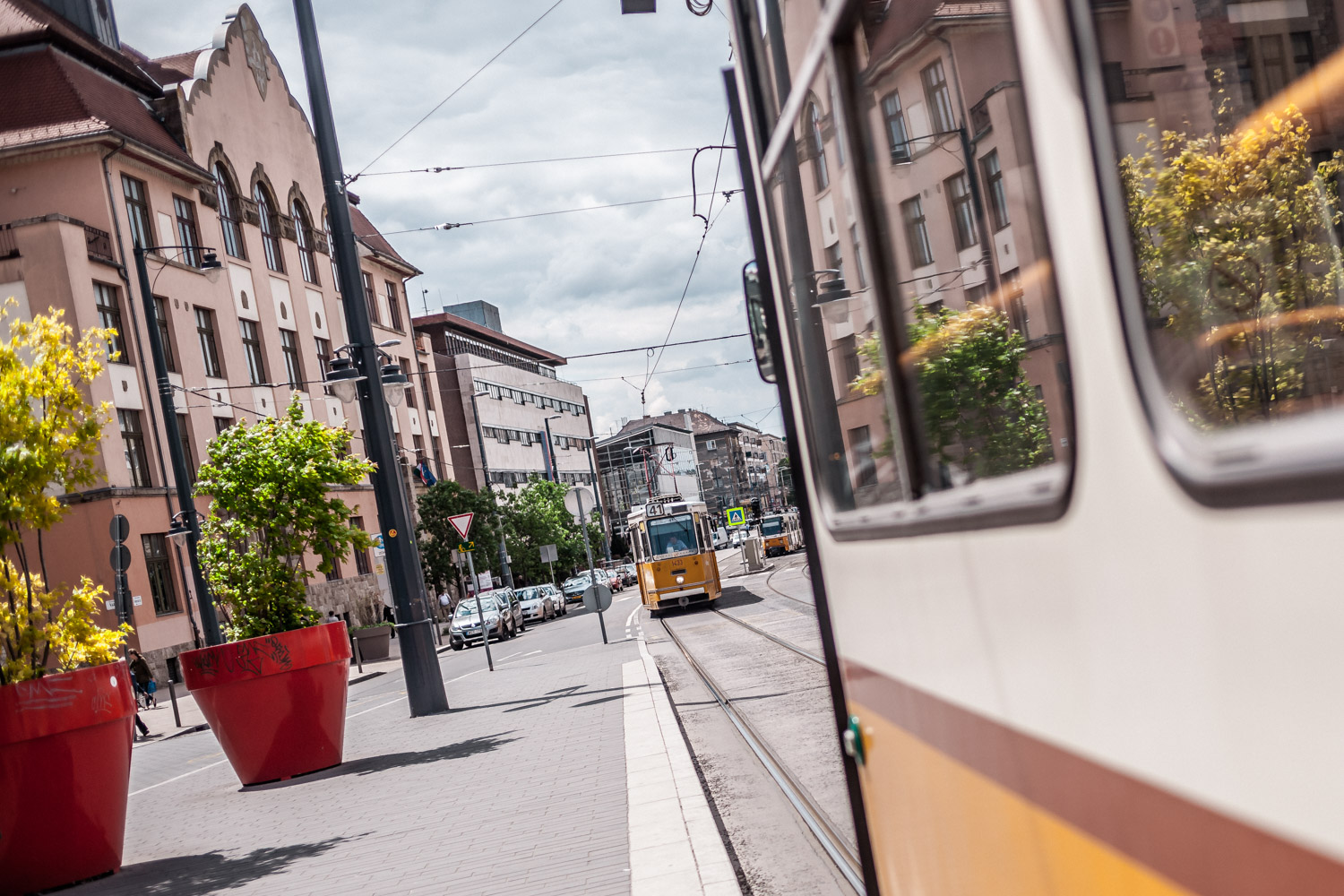People have mixed feelings about Ferenciek tere, the busy downtown square by the Pest end of Elizabeth Bridge – the rush-hour crowd and heavy smog cast a shadow over its magnificent sights. However, if you manage to shut out the deafening noises and traffic smells, you will be left with a historical site dotted with landmarks such as Párisi udvar, the Franciscan Church, the twin buildings of Klotild Palace and the ELTE university library.

Throughout the 1700s, locals referred to the
square as Franziskanerplatz – its German equivalent – before it was officially
christened Ferenciek tere. In former times, the square had the name of Barát
tér (’Friars’ Square’) which – similarly to Ferenciek tere – also implied the
area’s strong associations with the Catholic Church.
Back in the Árpád era, a
moat encircled the massive city wall which stretched around the historic centre
of Pest. After the moat was filled with earth, the freed-up area provided room
for the construction of a Gothic Franciscan chapel and a monastery whose works
were completed in 1260.

By the 1300s, plans were already in place to turn the small chapel into a dazzling church when something unexpected put a spoke in the friars’ wheel: the Ottoman conquest of Hungary. The Franciscan church was then converted into a mosque and remained a place of Islamic worship until the defeat of the Ottomans in the late 1600s. Around the turn of the century, the building was finally returned to its rightful owners.

In 1727, the area in front of the church officially became Barát tér. It took another 200 years for the two squares to be brought together to create Ferenciek tere, then a pleasantly busy transport hub in the heart of the city. In echoes of events today, thousands gathered here to protest the anti-cholera measures introduced by the government during an outbreak in 1831.

The next important milestone in the square’s history was the 1835 unveiling of Nereids fountain, an ornate work of art decorated with sculpted dolphins and seashells. Nereids is the first public drinking fountain in Budapest created by an artist, in this case Ferenc Uhrl, the base by József Fessl. Statues of great jurist István Werbőczy (1908) and cardinal Péter Pázmány (1914) were also once elements of the square’s ensemble, but both were demolished for political reasons in 1945.

Before the outbreak of World War II, adjoining Kígyó tér was given a new name and the square became known as Apponyi tér after the Hungarian statesman of a century ago. More than three decades later, it was changed again as the city administration christened it Felszabadulás tér (colloquially ‘Felszab tér'), a name which lasted until 1991. Shortly thereafter, the area in front of the Franciscan church and Felszabadulás tér were united to create modern-day Ferenciek tere.

Two major events contributed to the square’s becoming a modern-day transport vortex: the inauguration of Elizabeth Bridge in 1964 and the construction of a station on metro line M3 a decade later.




